So, you’ve installed a chatbot on your website, social media, and other communication channels. And it was supposed to be all looking brighter from now.
But instead, you’re having some problems with chatbots you weren’t expecting.
Don’t worry.
We’ll help you figure it all out so you can continue to enjoy the benefits of the technology.
Without further ado, let’s learn how to solve the biggest chatbot challenges that businesses struggle with.
Start using chat flows for elevated customer service
Let’s get straight into it and learn the answer to the following question—
What challenges might there be when deploying a chatbot?
We did thorough research amongst our clients and here are four real-life conversational AI challenges & solutions that they shared with us. Keep in mind that we’ll show solutions to these struggles on our system so if you want to follow along better, log into your Tidio account first.
Challenge #1: Combining AI-powered chatbots with chat flows
Essentially, there are two types of chatbots—
Rule-based chatbots (or chat flows) can take care of the common questions that can be answered within one message. AI bots, on the other hand, can handle customer queries that have follow-up questions and require AI and natural language understanding algorithms to decipher the intent.
You might wonder how to combine them to handle customer interactions most effectively. So, how to create the best strategy for using the technology to the fullest and use the right type of chatbot for a specific scenario?
Solution
Here’s what you can do:
- Use chat flows to open the conversation and welcome visitors
You can use the Proactive Welcome Message template to greet your target audience and returning shoppers. Just customize the online and offline messages to fit your brand, and it will be ready to go.
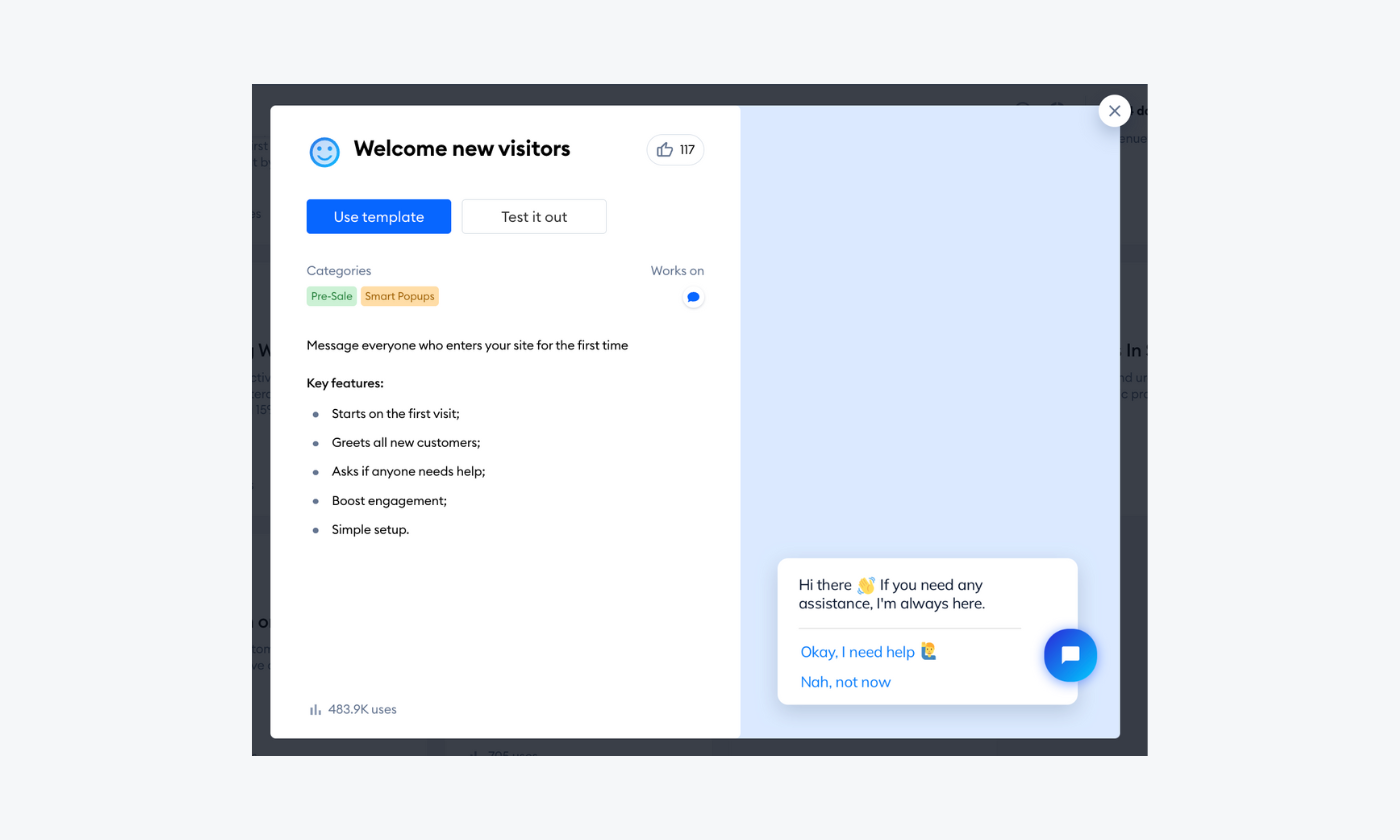
Read more: Learn how to write welcome messages to customers with examples and templates.
- Let the rule-based bots answer FAQs
You can use the FAQ for Online Store template and edit the messages to match your company. If you want to have different options than the ones presented on the template, just click the Advanced editing button. This will take you to the page where you can customize those options and much more.
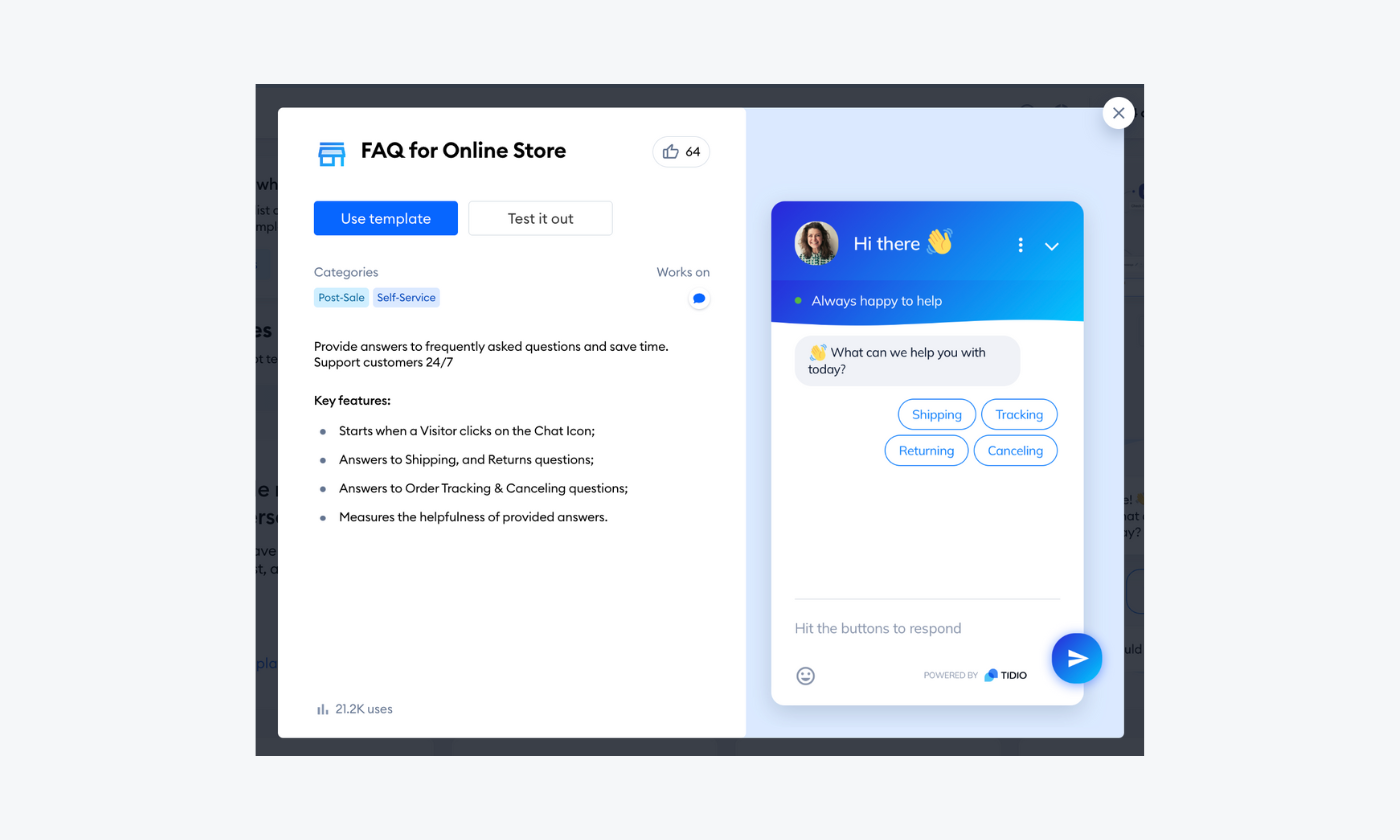
Read more: Discover all you need to know about FAQ chatbots including benefits, types, and use cases.
- Get AI chatbots to take over the more complicated requests
Whenever a client asks a question in a natural language or has follow-up questions, you can enable an AI-powered bot, like Lyro, to jump in and take care of them.
To do that, go to your Lyro tab and click on Manage under your Q&A section. Add as many FAQs as you can think of. Once questions-answer pairs are in the system, the AI chatbot will trigger by itself when the user asks a query that the system recognizes.
- Use AI-powered chatbots for sales
You can showcase your newest products, notify visitors of your deals, and more using virtual shopping assistants, like Lyro. For a bigger impact, make sure to add links to the product pages and photos of the items.
For example, you can create a chat flow that asks for the visitor’s contact information but implement Lyro to answer questions and give discount codes if the visitor types in a question instead of their details. This will help you feel less pushy and show that you value the customer.
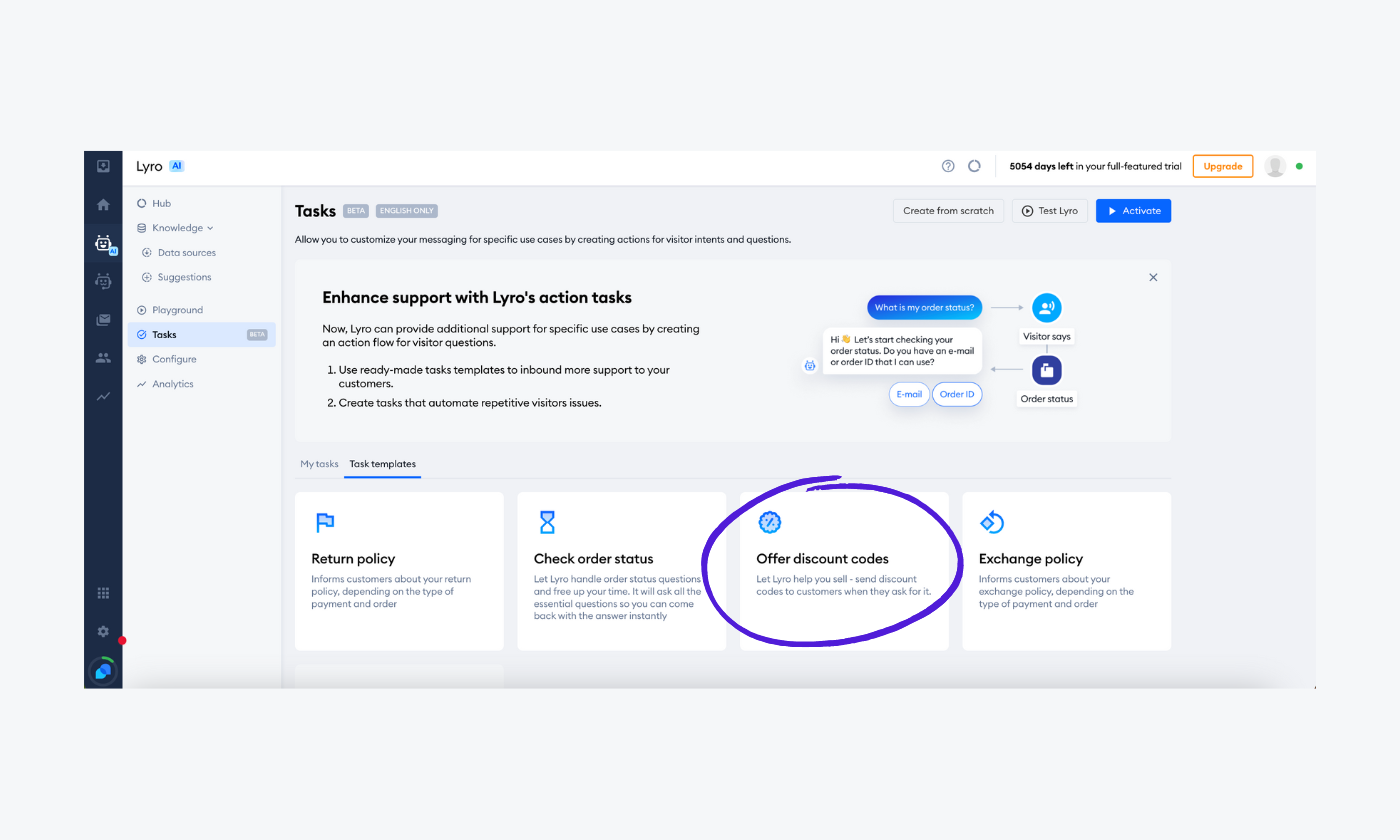
I think that the data and the AI feature were the two things that sold me more than just the ease of use in the UX of the [Tidio] system. So it's the whole package, and I think it works together really nicely.”

Read more: Learn more about how Bella Sante increased sales using chatbots from Tidio.
Challenge #2: Time and effort to train the AI
AI is supposed to make our lives easier and speed things up. So why does it take so long to train a chatbot and create a knowledge base for it? And is there a way to make it quicker?
Well—
The simple answer is yes. But let’s go through the solution to this problem in more detail.
Solution
The best way to fix this chatbot problem is to dedicate some time to creating a good FAQ page and using AI that can learn from it. This will save you time on training the technology in the long run.
- Consult your customer support team on common questions
Make sure to speak to your human agents when creating the FAQ page. They know best what the customers are actually asking about and struggling with. These are the questions you need to put on the page, so keep your representatives involved in the process.
You can also extract common queries from live chat using Tidio.
- Extract chat transcripts to analyze the most common queries
To preview, extract, and send transcripts from the support conversation, go to your Inbox panel. Open the chat and click on the three dots under your visitor’s details section.
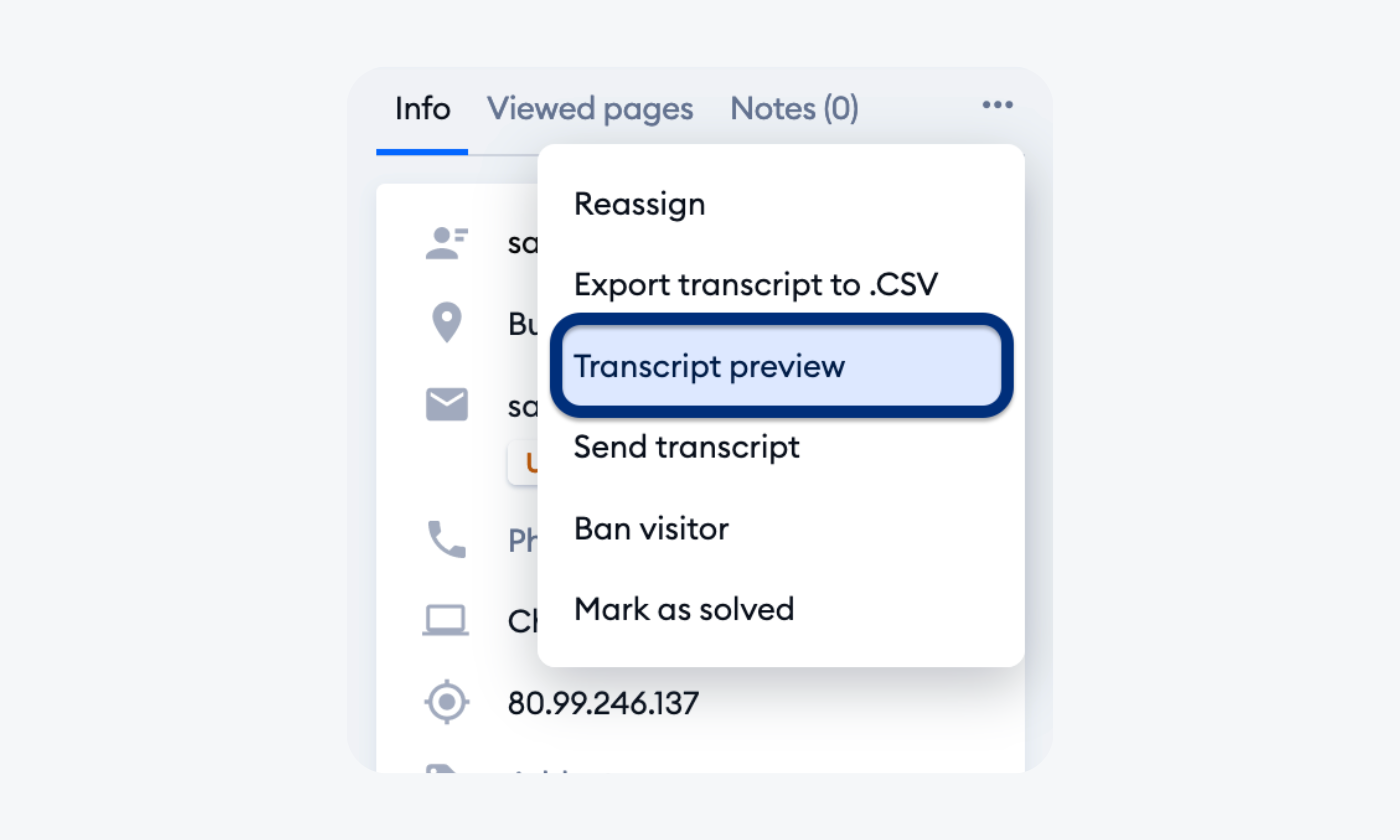
You can also send a chat transcript automatically if the visitor leaves the conversation before finishing the chat. It happens on autopilot after 15 minutes from the user leaving your site.
- Dedicate a day to create a good FAQ page
If you don’t have a FAQ page yet, it’s a good idea to create one. Some best practices include focusing on user intent, using natural language, and maintaining a consistent format.
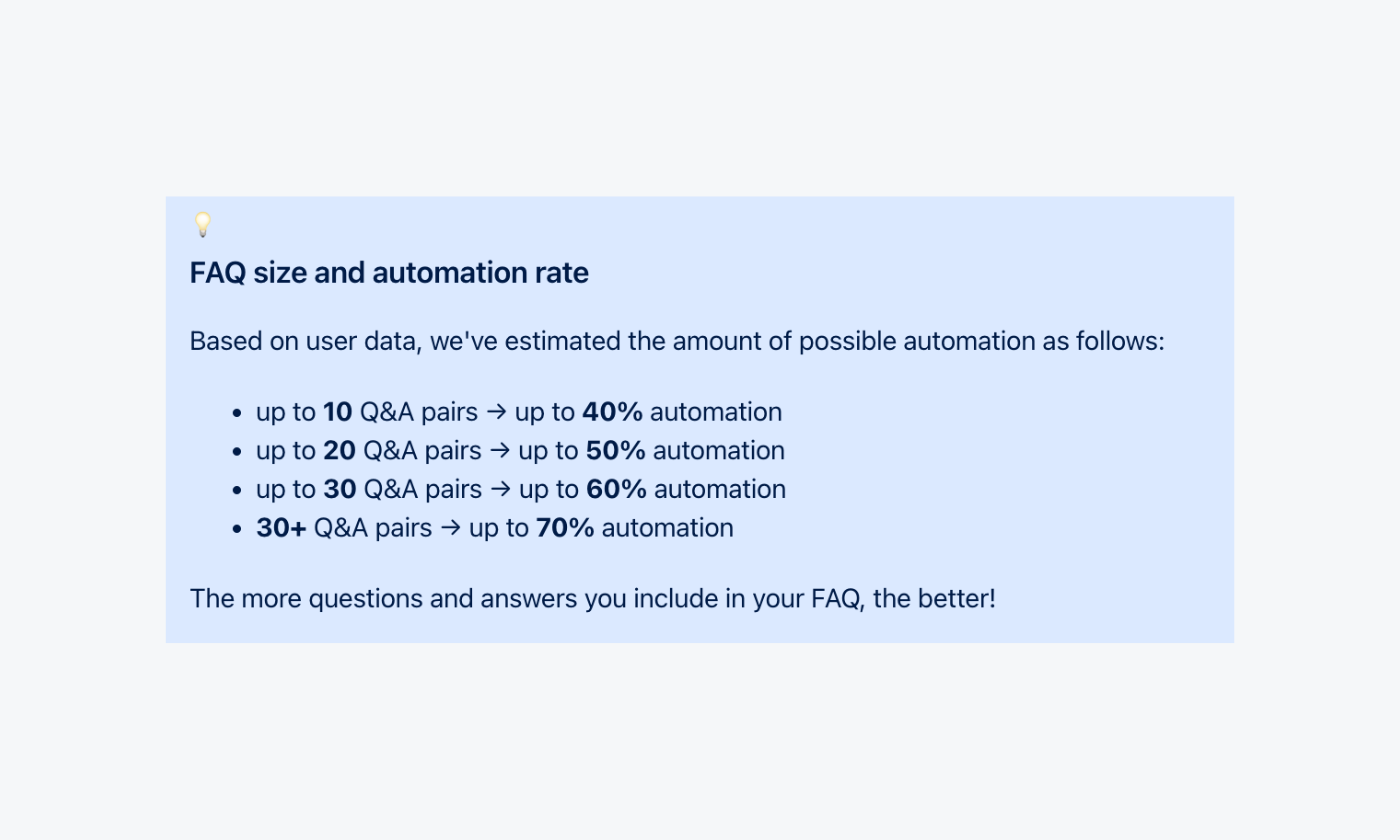
- Ensure you give clear and concise answers
Simple, quick answers work best for customer service queries. Try to keep the information high-level avoiding too many technical details even for product-related questions. You can always provide a link to the product page if the visitor wants to go more in-depth.
We are satisfied with the quality of conversations with bots. The flexibility offered by the bots allow us to do a whole variety of different things automatically.

Here’s how Tidio’s AI, Lyro, compares against Klarna’s in-house chatbot:
Read more: Learn how to create a good FAQ for Lyro.
Challenge #3: Setting up the system effectively
Inaccuracies of answers from your customer service chatbots can confuse visitors. And they are common especially during the first days of using the system for the public. The main reason for this is the poorly prepared FAQ that the AI is getting its knowledge from. So, let’s address this issue and see how to deal with it.
Solution
To fix this chatbot implementation challenge, we need to look at the inputs the bot is taking its data from, meaning your FAQs as well as your chatbot analytics. This will present the full picture of what needs to be fixed.
- Check your FAQs thoroughly
There could be a duplication of a question in your knowledge base that’s spelled differently and has a different answer. If that’s the case, the virtual assistant will not be able to answer the query correctly as it’s getting mixed information in its data. Other issues with the FAQs include outdated information, inconsistent language, and questions comprising keywords instead of full sentences.
- Test the AI and monitor its performance
Before launching it to the public, take your machine learning system for a test ride. Give a week for your teams to ask your generative AI questions and see how it reacts. Note down any time the automation does something unexpected and see how you can work on it. This technology works best when you let it learn for some time before releasing it to your customers.
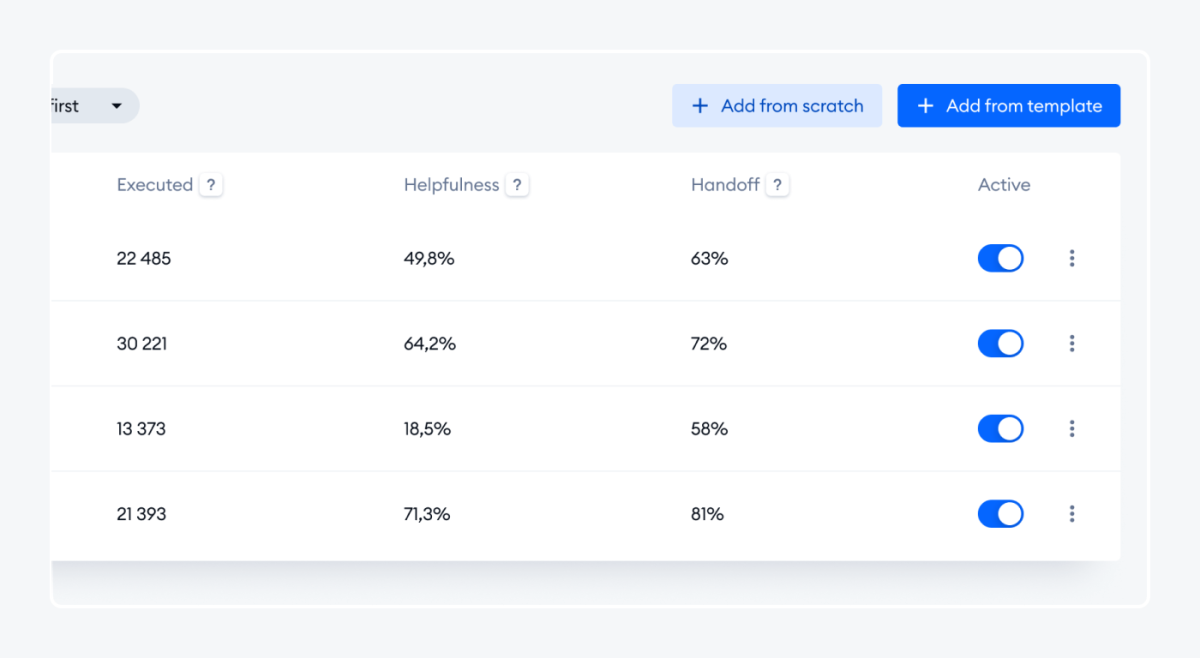
- Fix any issues in real time
You should be able to catch any AI chatbot problems that occur during user interactions by looking at your reporting metrics and analytics dashboards. And once you see them, try fixing the issues quickly, so your bots can keep working effectively for you.
We had 250 credits to test Lyro. And then we were able to systemize the customer inquiries and give Lyro more FAQs, from which the bot started learning to answer questions better. We got to the point where the chatbot takes care of 99% of these common queries.

Did you know that…
Over 87% of customers say chatbots are effective at solving their customer service issues.
Challenge #4: Customization of messages
The chatbot needs to feel like it’s a part of your company. This relates to speaking in your brand voice, matching the look of your website, and more. But sometimes, AI just isn’t the best at blending in. How can you change that and customize the messages to fit your brand more?
Solution
The messages that Lyro sends to your clients are based on the brand voice you used in the data it received during training. So, to change this, you should go through the question-answer pairs and customize the messages. Let’s see how to do that.
- Go to Lyro’s tab on your dashboard and customize or edit the response
If you already uploaded your FAQs, this is what you should see.
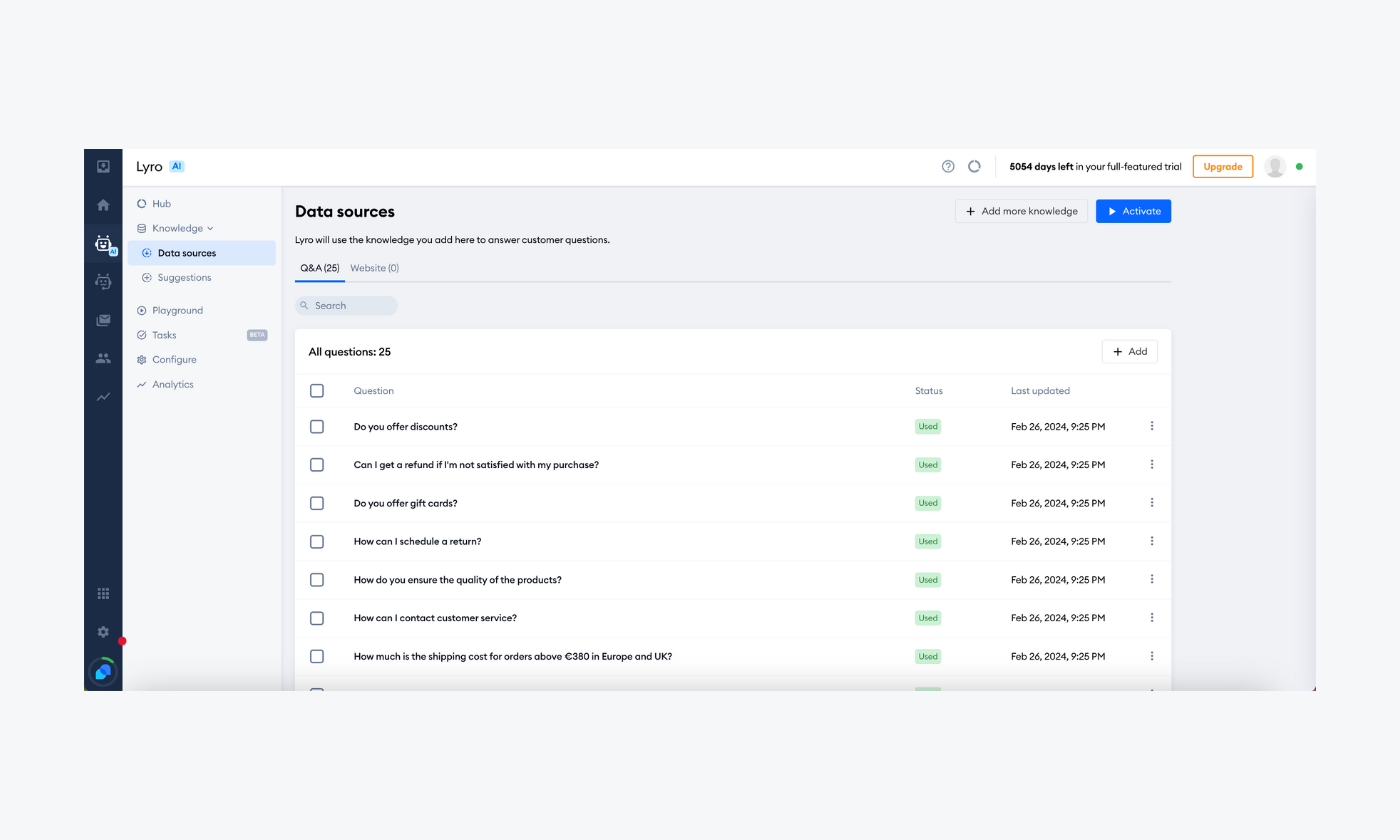
You can go through all the questions and check if you’re happy with the response AI is sending to your clients. Change it to your brand’s high standards whenever you see something that’s not quite right. This will help to improve the customer experience across all platforms, including your site, WhatsApp, and Facebook Messenger.
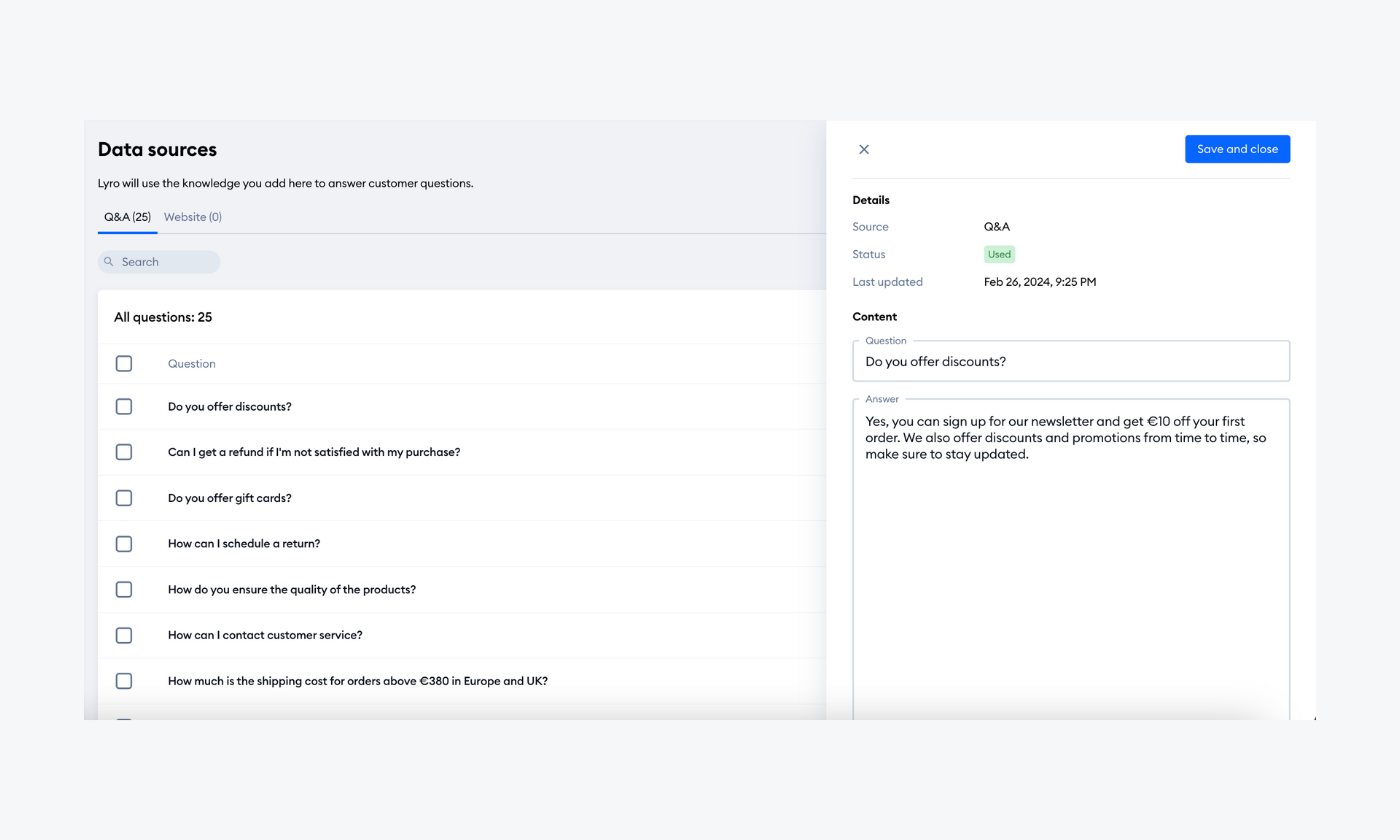
- Segment users and target specific groups with specific answers
Segmenting users will help you better customize your customer communication because you’ll be able to craft messages directed specifically for certain users. For example, you should have a different welcoming message for new visitors and a separate one for returning clients. This simple change will make the shopper feel more valued and improve their experience.
To segment customers using Tidio, go to your Contacts list and filter the users according to a specific segment, like country, channel, email consent, etc. You can then create individual segments for each category you have on the list by clicking Save as segment.
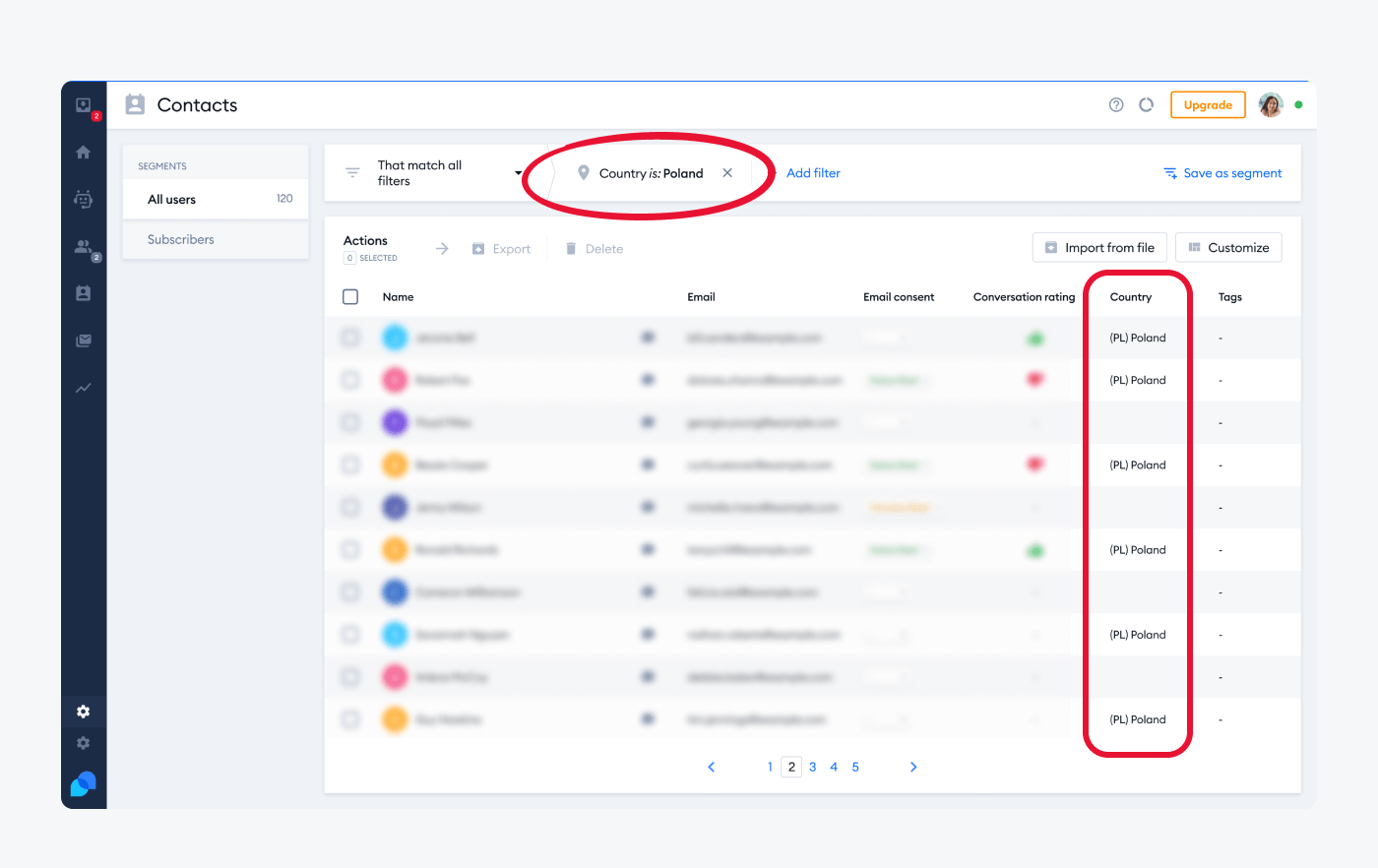
Tidio has truly exceeded our expectations when it comes to customization options. What sets Tidio apart is its user-friendly interface and the seamless process of building chatbots. Unlike other tools, Tidio has made this aspect remarkably easy, allowing us to tailor our chatbots efficiently to meet our specific needs.

Read more: Discover how Suitor used Lyro to achieve 85% customer service automation.
Benefits of solving chatbot challenges
AI chatbots are pretty much a business’s best friend these days—they’re robust, cost-effective, and great for simulating human conversations and chatting with a bunch of users all at once. They’re like your own personal customer service team, able to offer tailored care to a lot of clients simultaneously.
In fact there was a 92% increase in chatbot use since 2019, which makes them the brand communication channel with the largest growth. Also, about 73% of consumers expect businesses to offer chatbots for convenience in interactions.
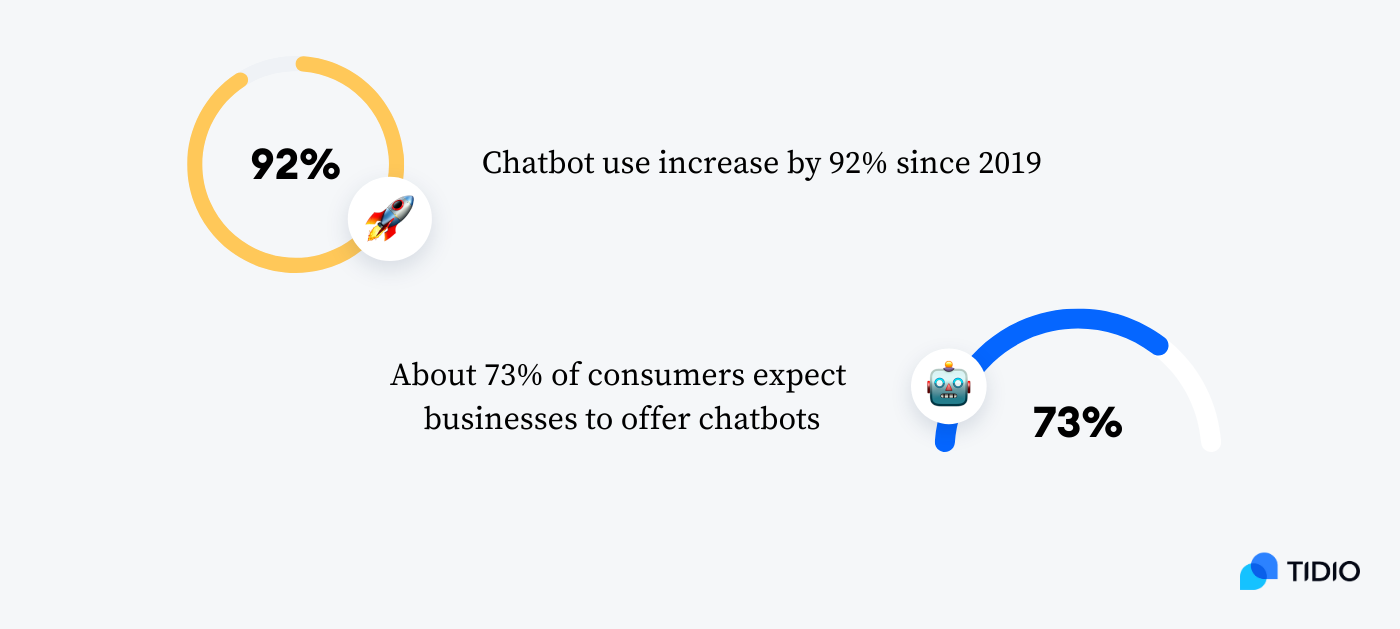
But hey, nobody’s perfect. There have been times when chatbots don’t really live up to the hype and end up as flops. People are still figuring out chatbot development, so there are some hurdles to jump over before a foolproof messaging approach for the future gets established.
But—
you might find that the main solution to most challenges is using the right chatbots for the right scenarios.
Read more: If you are considering using a chatbot agency, check out our article on top chatbot development services to help you choose wisely.
Chatbot challenges: key takeaway
In recent years, there have been a lot of great advancements in chatbot software development. Providers offer more and more features that enhance the user experience while making your human agents’ jobs easier.
Chatbots can help startups, ecommerce companies, as well as enterprise-level businesses with client retention, customer satisfaction, and more.
Here are the challenges with solutions for a quick recap:
- Combining AI-powered chatbots with chat flows
Solution: Use chat flows to open the conversation, welcome visitors, and answer FAQs. Let conversational AI take care of natural language requests and boosting sales.
- Time and effort to train the AI
Solution: Firstly, get a list of common questions from your support team. Then, extract chat transcripts for deeper analysis of the queries. Once you have all the questions, dedicate a day to creating a good FAQ page and ensure to give clear answers to each question.
- Setting up the system effectively
Solution: Start by checking your FAQs thoroughly. Also, frequently test the AI’s performance and fix any arising issues as soon as possible.
- Customization of messages
Solution: Edit the responses on the system’s dashboard. On top of that, try segmenting users to better target specific groups with appropriate answers.
No technology is perfect and people come across chatbot challenges during the development and use of this system. But don’t get discouraged, most of the issues can be easily fixed and bots prove to have so much potential you wouldn’t want your business to miss out on.

